Too Long; Didn’t Read
Canada has 48 national parks packed with amazing nature. You’ll find incredible wildlife here – think bison, bears, and whales. The geology is unique too, showing ancient fossils and even exposed mantle rock. These places also hold rich Indigenous history.
Highlights include:
- Rockies Majesty: Banff’s lakes & skiing, Jasper’s dark skies & ice walks, Yoho’s waterfalls & fossils.
- Coastal Wonders: Pacific Rim’s surfing & West Coast Trail, Cape Breton’s Cabot Trail & whales, Fundy’s massive tides.
- Eastern Gems: Gros Morne’s fjords & Tablelands, PEI’s red sand & Anne landscapes.
- Arctic/Prairie/North: Auyuittuq’s raw wilderness & Mt. Thor, Grasslands’ bison & dark skies, Kluane’s Mt. Logan & icefields, Wapusk’s polar bears.
Plan your adventure:
- Go Summer for full access; Winter for skiing/ice activities.
- Book early for popular spots/passes.
- Respect wildlife & nature, support Indigenous tourism.
Canada’s wild side shines in these parks. You’ll find everything from famous peaks to hidden spots, perfect for any adventure.
Why Canada’s Parks Should Top Your Travel List
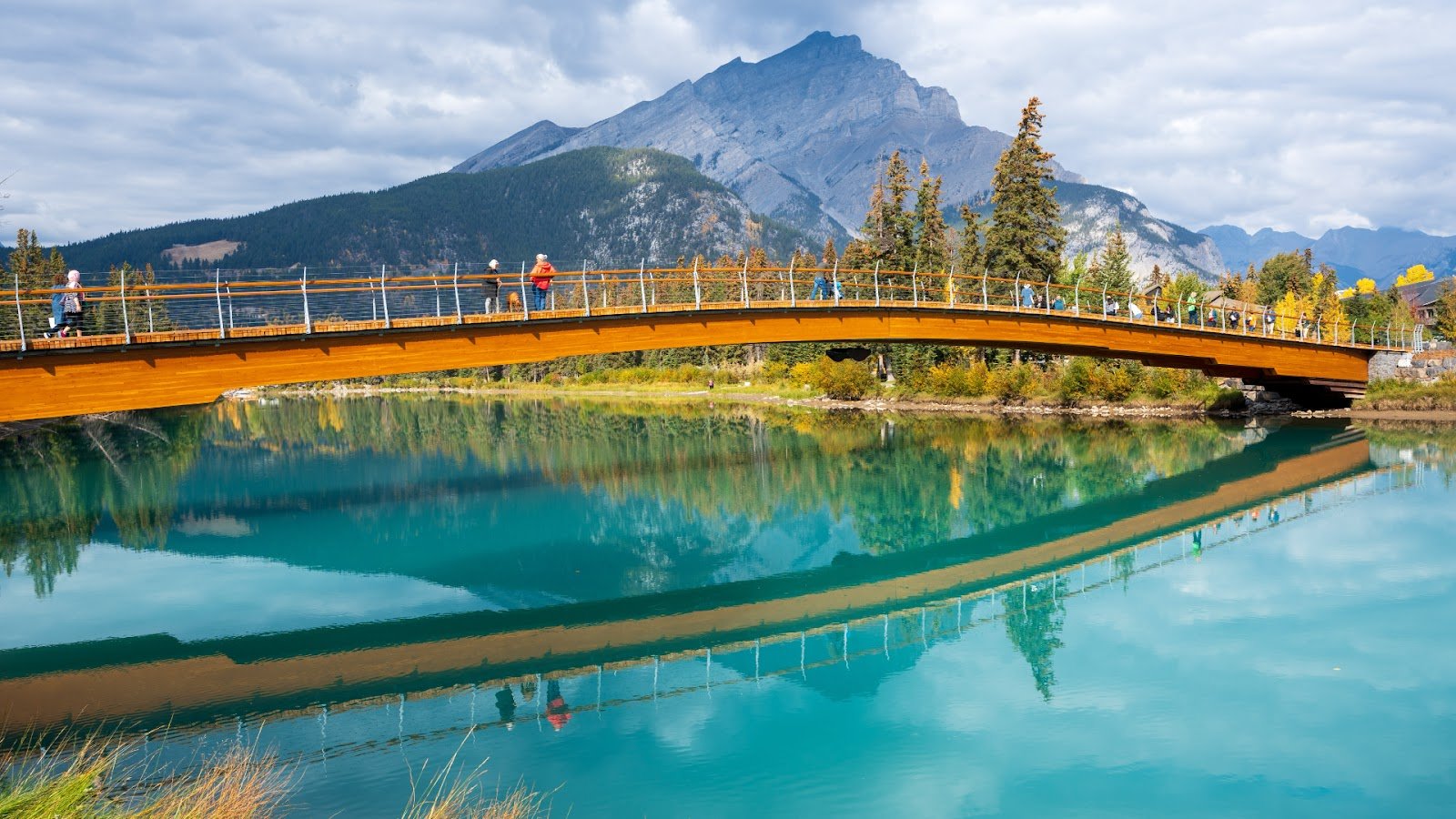
Canada covers almost 10 million square kilometers. That makes it Earth’s second-biggest country. Within this huge area sits an amazing network: 48 national parks and reserves. They show nature at its absolute best. Think UNESCO sites like Banff and Gros Morne, plus hidden Arctic spots. These protected places offer unforgettable adventures.
This guide covers famous spots and quieter finds. You’ll explore Arctic tundra and coastal rainforests. Every park has its own distinct tale to tell.
Biodiversity here is incredible. Picture vast bison herds, polar bears on the hunt, whales leaping near rugged shores. Parks guard geological marvels shaped over millions of years. Ancient fossils, exposed mantle rock, and huge waterfalls create landscapes that feel like another world.
Cultural meaning is deep in these spaces. Indigenous peoples have lived on these lands for thousands of years. Their heritage, stories, and traditions are part of every park experience.
Western Mountain Majesty: The Rockies and Beyond
Banff National Park (Alberta)
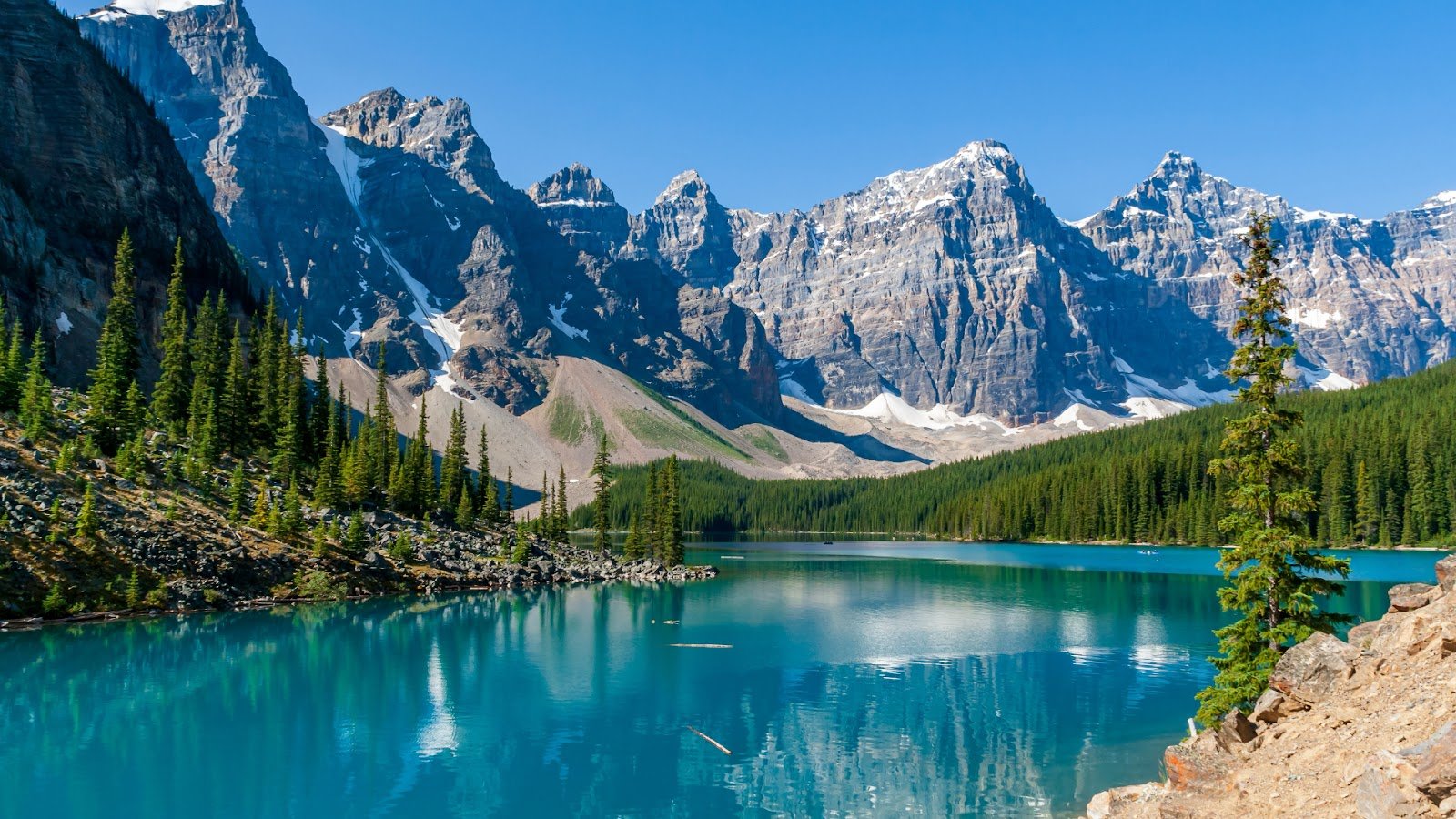
Banff holds a special place: it’s Canada’s first national park and still the big draw. Lake Louise stuns with its emerald water, perfectly reflecting sharp, snow-capped peaks. Moraine Lake matches that beauty, though summer brings serious crowds.
After hiking, Sulphur Mountain hot springs are perfect for relaxing. Soak in warm pools and gaze out across Bow Valley. Pure magic.
You can ski world-class slopes or take scenic drives along Icefields Parkway. Wildlife is everywhere – elk stroll through town casually, while mountain goats cling to sheer cliffs.
Here’s a tip: combine your Banff trip with Jasper National Park using Icefields Parkway. That drive features epic glaciers and mountain views guaranteed to take your breath away.
Jasper National Park (Alberta)
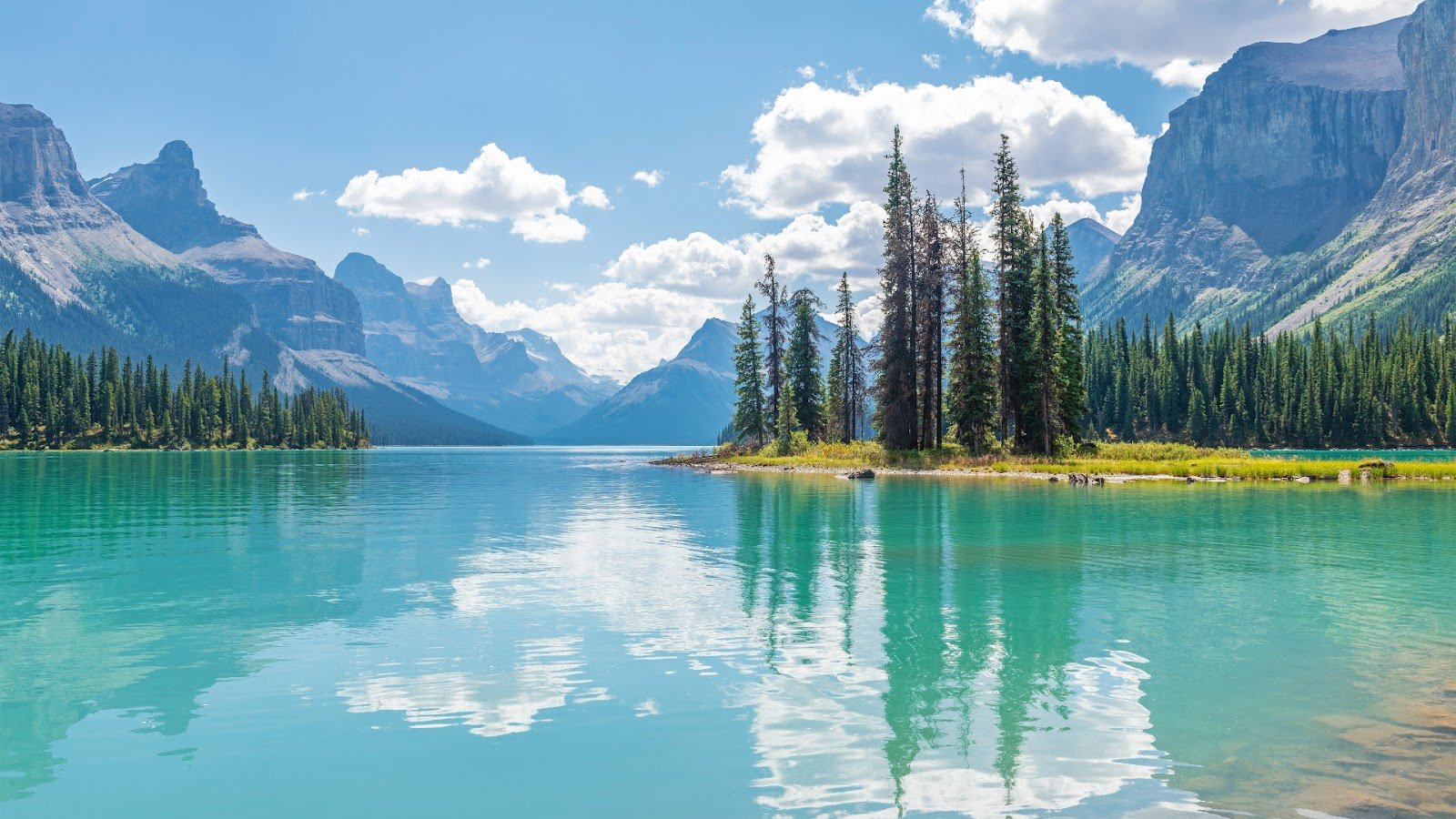
Jasper holds something Banff can’t offer: Dark Sky Preserve status. When night comes, stars blaze brilliantly across clear, unpolluted skies. Stargazing here feels like stepping onto another planet.
Come winter, Maligne Canyon cuts deep into limestone, creating fantastic ice walks. Nearby, Columbia Icefield lets you stand on ancient ice formed over centuries.
Activities cover hiking Bald Hills for wide views, climbing frozen waterfalls, and relaxing tired muscles at Miette Hot Springs. These pools sit higher than Banff’s springs, giving you different mountain vistas.
Yoho National Park (British Columbia)
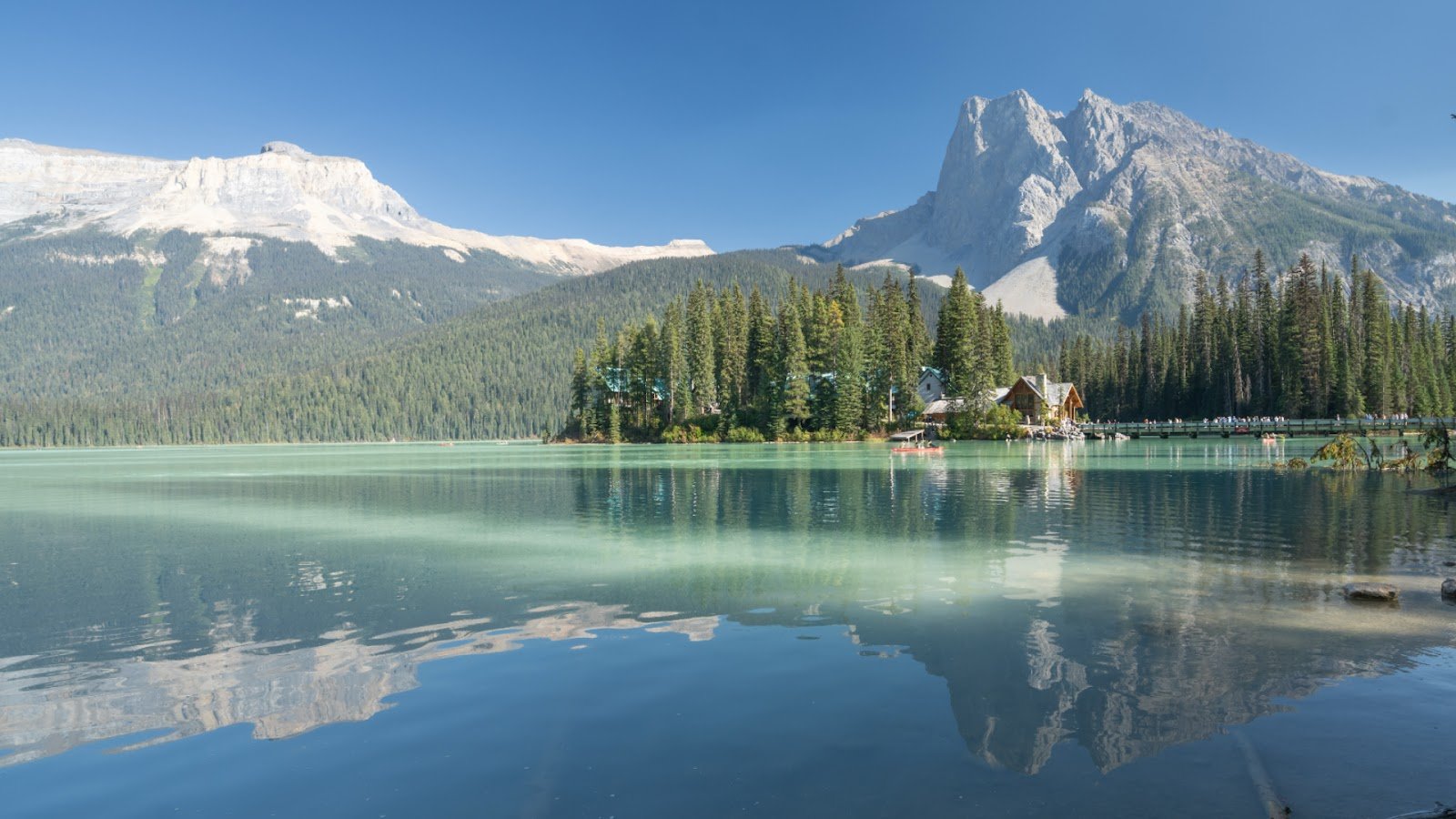
Yoho might be small, but it’s packed with amazing sights. Emerald Lake truly looks like its name suggests – colors so bright they seem almost unreal.
Takakkaw Falls drops a huge 373 meters. That makes it Canada’s second tallest waterfall. You can see the mist it kicks up from miles away.
What really sets Yoho apart are Burgess Shale fossils. These remains are 505 million years old. They show us sea creatures from a time when Earth was a completely different place. Guided tours let you see these ancient lifeforms.
For a tough hike with big rewards, try Iceline Trail. You get incredible glacier views. Walk past moraines and summer alpine meadows full of wildflowers.
Hidden Gem: Kootenay National Park (British Columbia)
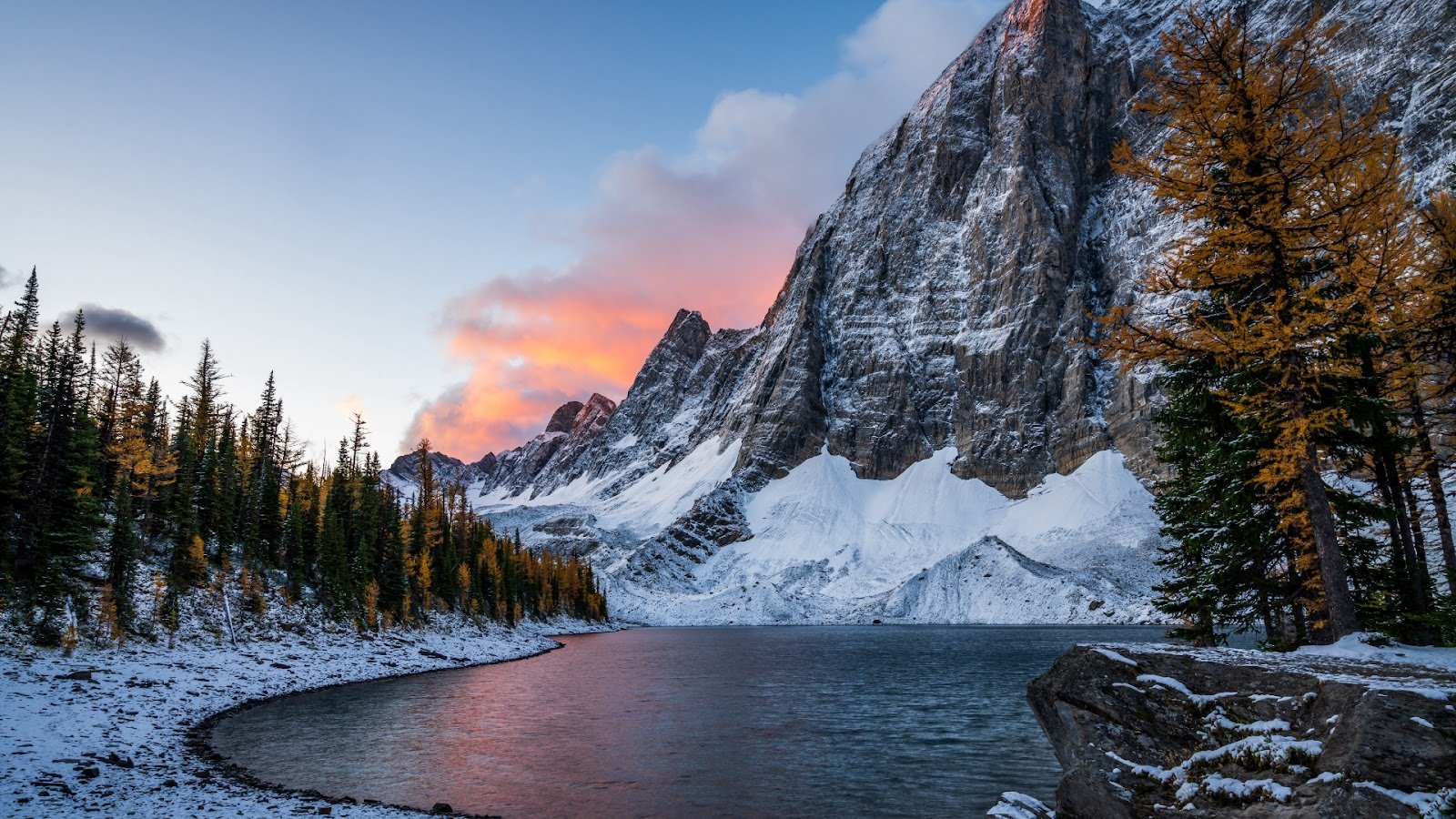
Skip Banff’s crowds and head to Kootenay. Soak in Radium’s hot springs – same warm waters, minus the tourist buses. Nearby, Marble Canyon reveals smooth limestone walls shaped by rushing water over ages.
While this park links up with others nearby, most people drive right past it. They’re missing out. You get a quiet escape instead.
Coastal Wonders: Where Land Meets Sea
Pacific Rim National Park Reserve (British Columbia)

Long Beach runs for kilometers along Vancouver Island’s coast. Surfers take on Pacific swells here, riding waves that journeyed thousands of klicks to shore. Storm watching in winter is just as wild – big waves slam rocky headlands while wind howls through coastal forest. It’s a sight.
Nearby, the West Coast Trail tests experienced hikers across 75km. You’ll cross suspension bridges, walk beaches, pass through rainforest – it’s wilderness you won’t forget. They call it wild for good reason.
First Nations culture adds depth to visits. Learn about Nuu-chah-nulth peoples here for thousands of years. Their marine knowledge and traditions offer perspectives found nowhere else.
Kayaking Broken Islands reveals hidden coves, sea caves, and wildlife. Seals, sea lions, orcas are common here.
Cape Breton Highlands (Nova Scotia)
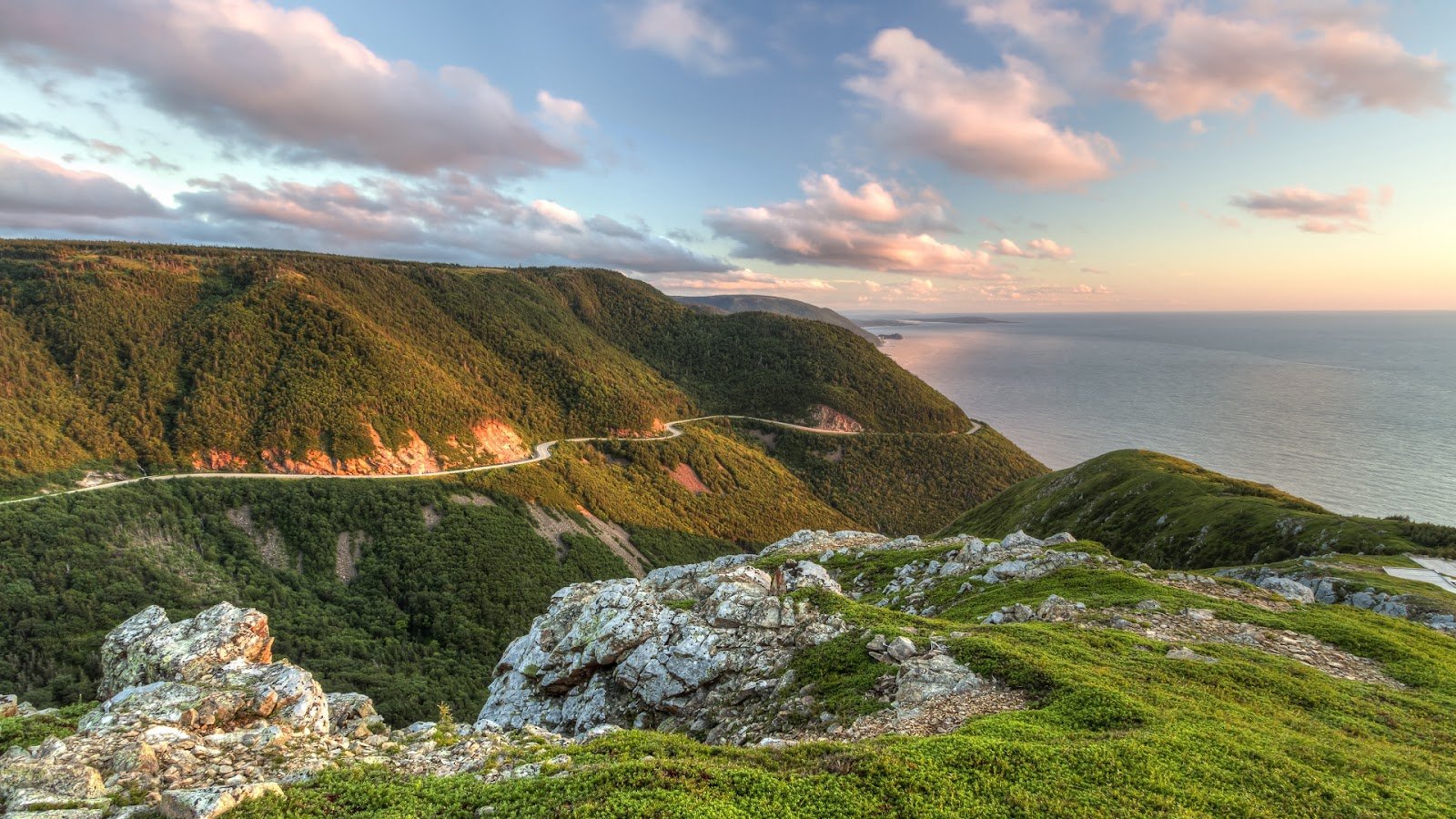
Drive Cabot Trail. It’s a world-famous scenic loop. You’ll wind past highlands, deep valleys, and cliffs that drop straight into Atlantic waves.
Want whales? Hike Skyline Trail. From high lookouts, you might spot pilot whales, minke whales, or even humpbacks feeding offshore.
Mi’kmaq culture is part of the place here. Knowledge, stories, and crafts share their long history.
Ingonish offers fun surprises: golf with ocean backdrops and surfing on decent Atlantic beach breaks.
Fundy National Park (New Brunswick)
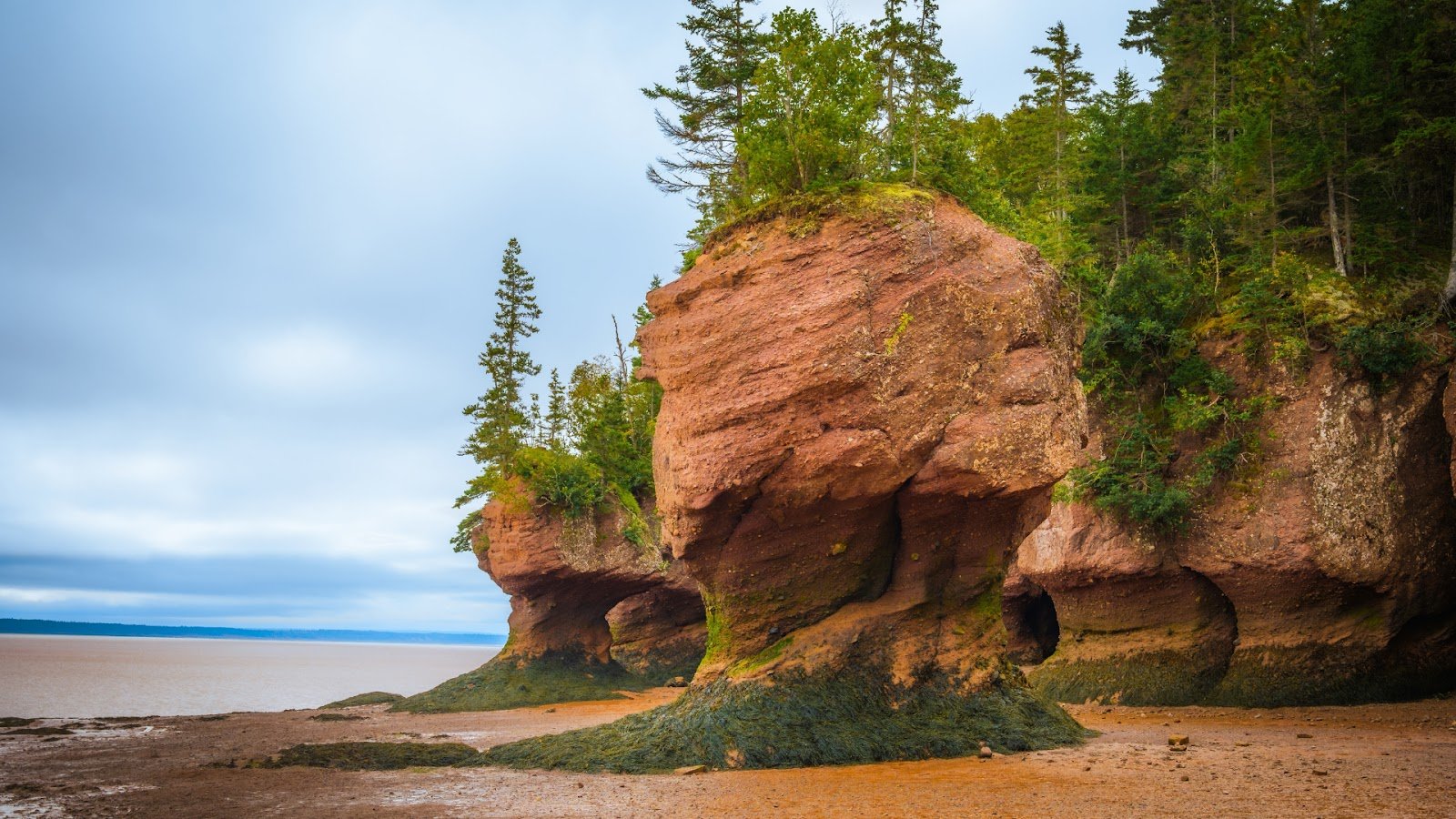
Fundy has the planet’s highest tides. Twice each day, as much as 16 meters of water rushes in, then rushes out. This constant movement shapes wild, ever-shifting landscapes and supports unique ecosystems.
Hopewell Rocks turn into islands at high tide. When water pulls back, they become towering formations. Kayaking high tide offers a crazy perspective: you paddle above spots you walked just hours before.
Acadian forests mix hardwood and softwood trees. Their fall colors stand right up there with New England’s famous displays.
Dicken Falls offers great hiking trails. Nearby tidal pools expose sea creatures perfectly adapted to this extreme environment.
Eastern Gems: Forests, Islands & Unique Landscapes
Gros Morne National Park (Newfoundland and Labrador)
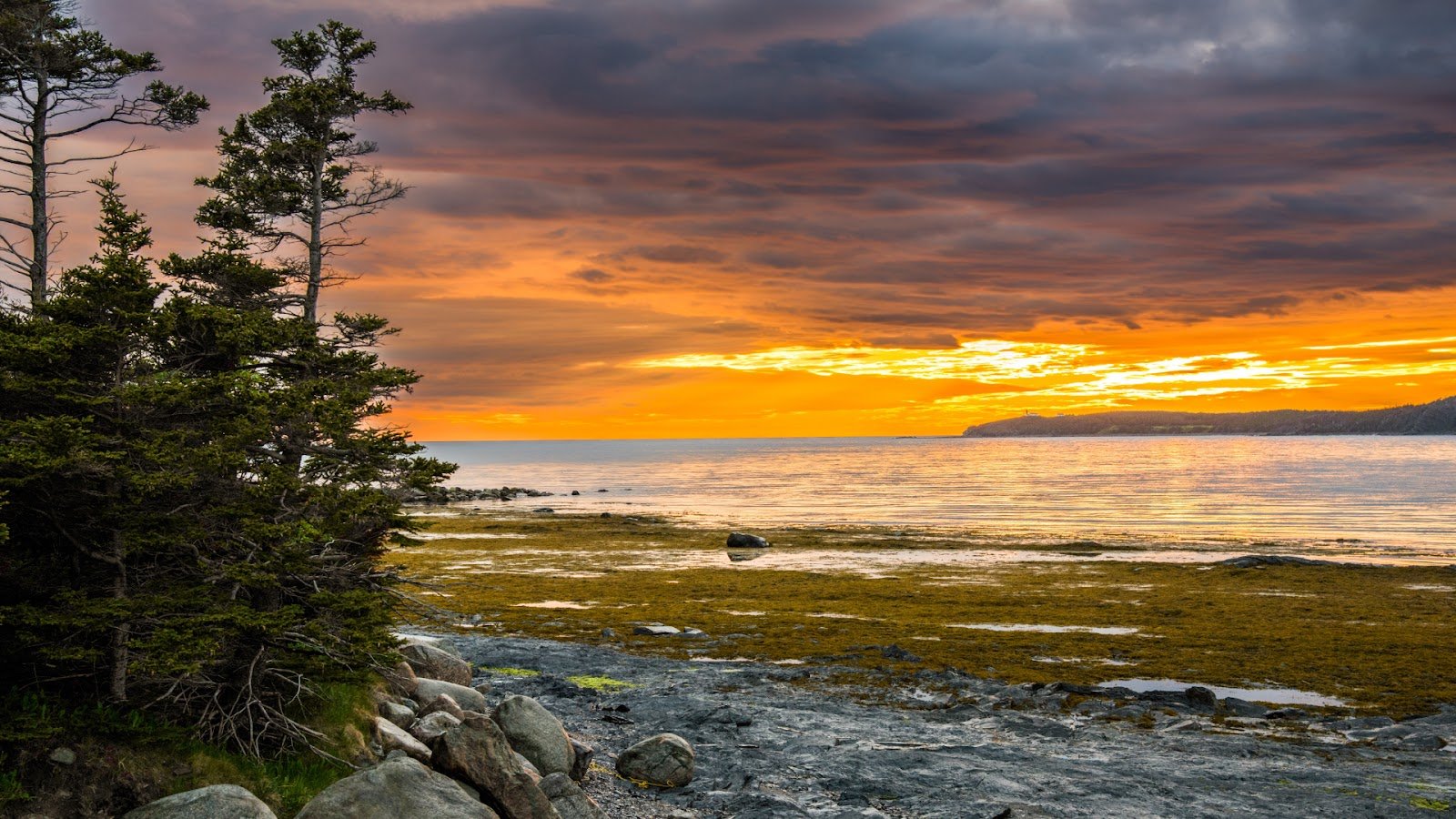
This UNESCO World Heritage spot holds geological wonders found only here. Picture ancient fjords, carved long ago by glaciers, forming dramatic waterways inland. Then there are the Tablelands: you’re walking on actual pieces of Earth’s insides – mantle rock exposed. It’s true!
Take a boat tour on Western Brook Pond. You’ll glide through dark waters, cliffs soaring straight up on either side. Waterfalls tumble hundreds of meters down those sheer rock faces.
Hiking Gros Morne Mountain? It’s a tough climb, steep for sure. But reaching the top? Worth it. The view takes in the whole park. On a good day, you might even spot Labrador across the water.
And don’t forget the fossils. Ancient sea creatures, trapped in limestone, show off this area’s past. It tells a story: once, tropical seas covered this land.
Prince Edward Island National Park
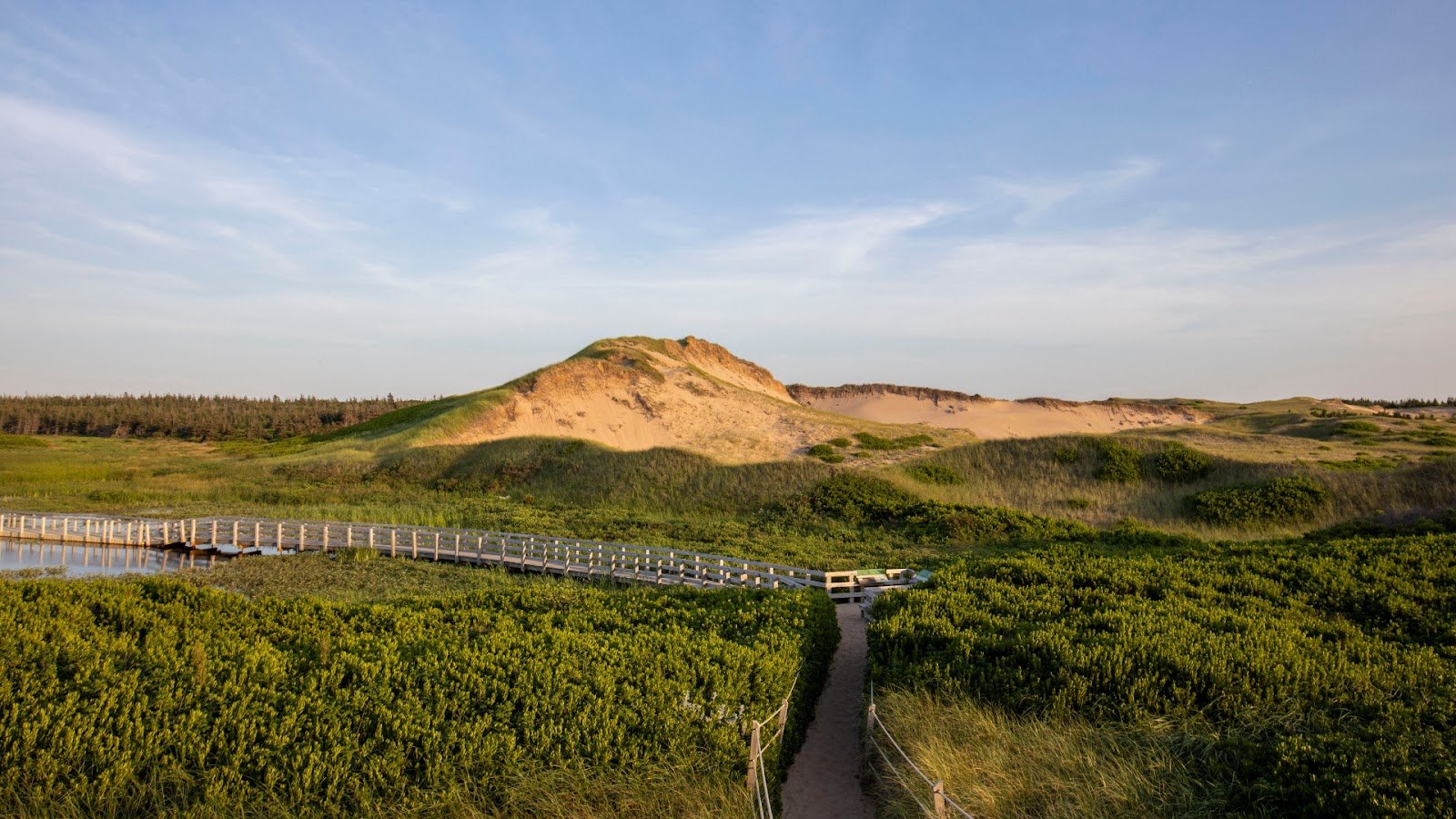
Fans of Anne of Green Gables flock here from everywhere. They walk right into L.M. Montgomery’s world thanks to preserved landscapes and old heritage buildings.
Beaches here have striking red sand against a bright blue ocean. Rich in iron, this rusty sand heats up fast in summer. Water feels warmer than you’d think for Atlantic Canada.
Greenwich Dunes feature rare curved dune systems. Boardwalks let you explore unique ecosystems without harming delicate plants.
You can pedal past lovely views on flat bike trails. Spot birds in varied habitats. Or dig for clams when the tide’s out.
Arctic Adventure: Auyuittuq National Park (Nunavut)
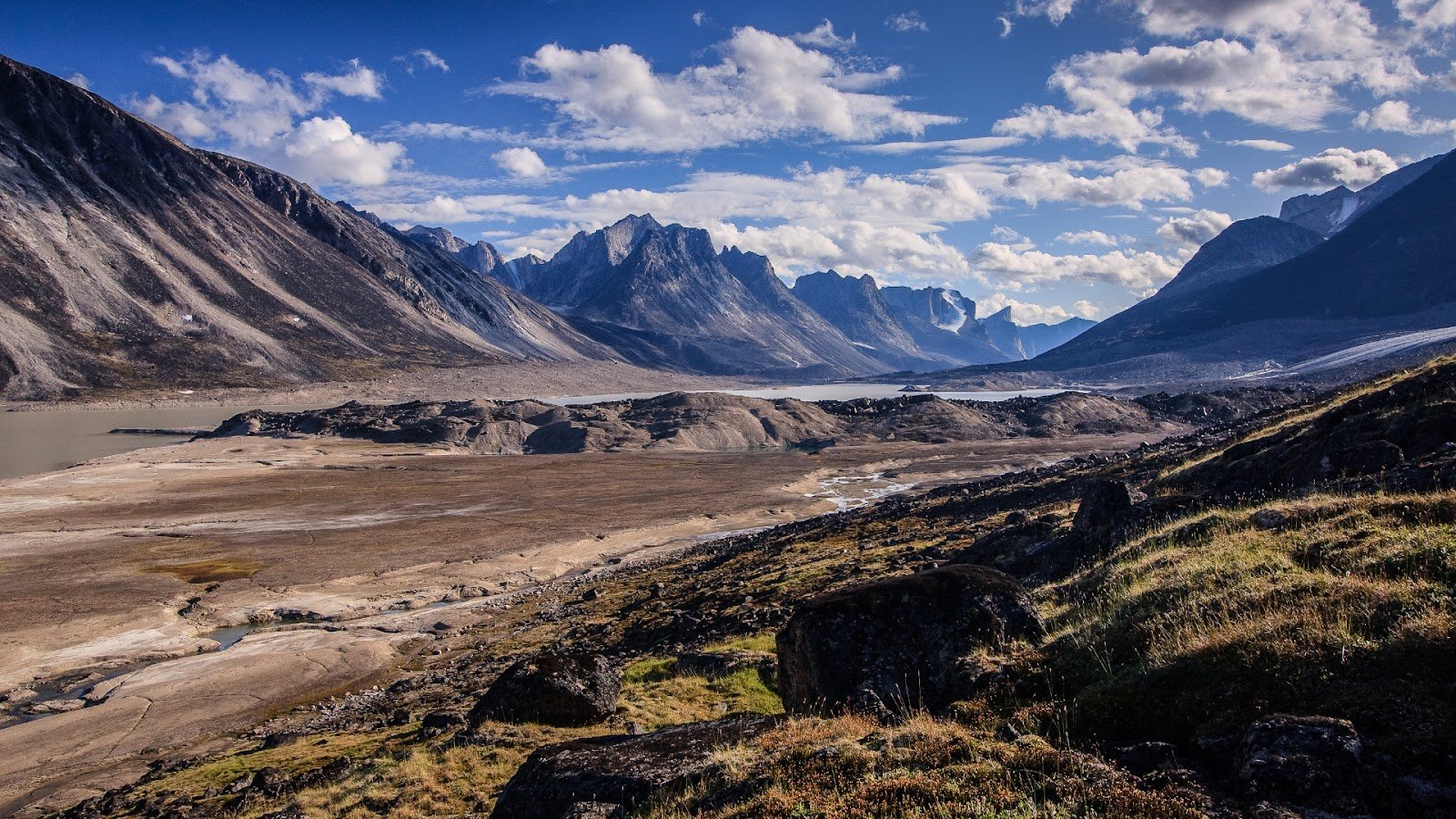
Want wilderness that feels truly wild? Head to Auyuittuq. Trekking Akshayuk Pass puts you right in the middle of raw Arctic land. You’re surrounded by untouched nature.
Keep an eye out – polar bears hunt seals along ice edges here. Remember, you need proper guides and safety gear for any trip this far north.
Then there’s Mount Thor. Its cliff drops straight down for more than 1,250 meters. That’s the biggest vertical drop on Earth. Even skilled climbers find it daunting.
This park demands careful prep. But for adventurous folks ready for it? The payoff is huge. You’ll experience things very few people ever do.
Prairie, Tundra & Northern Wilderness
Grasslands National Park (Saskatchewan)
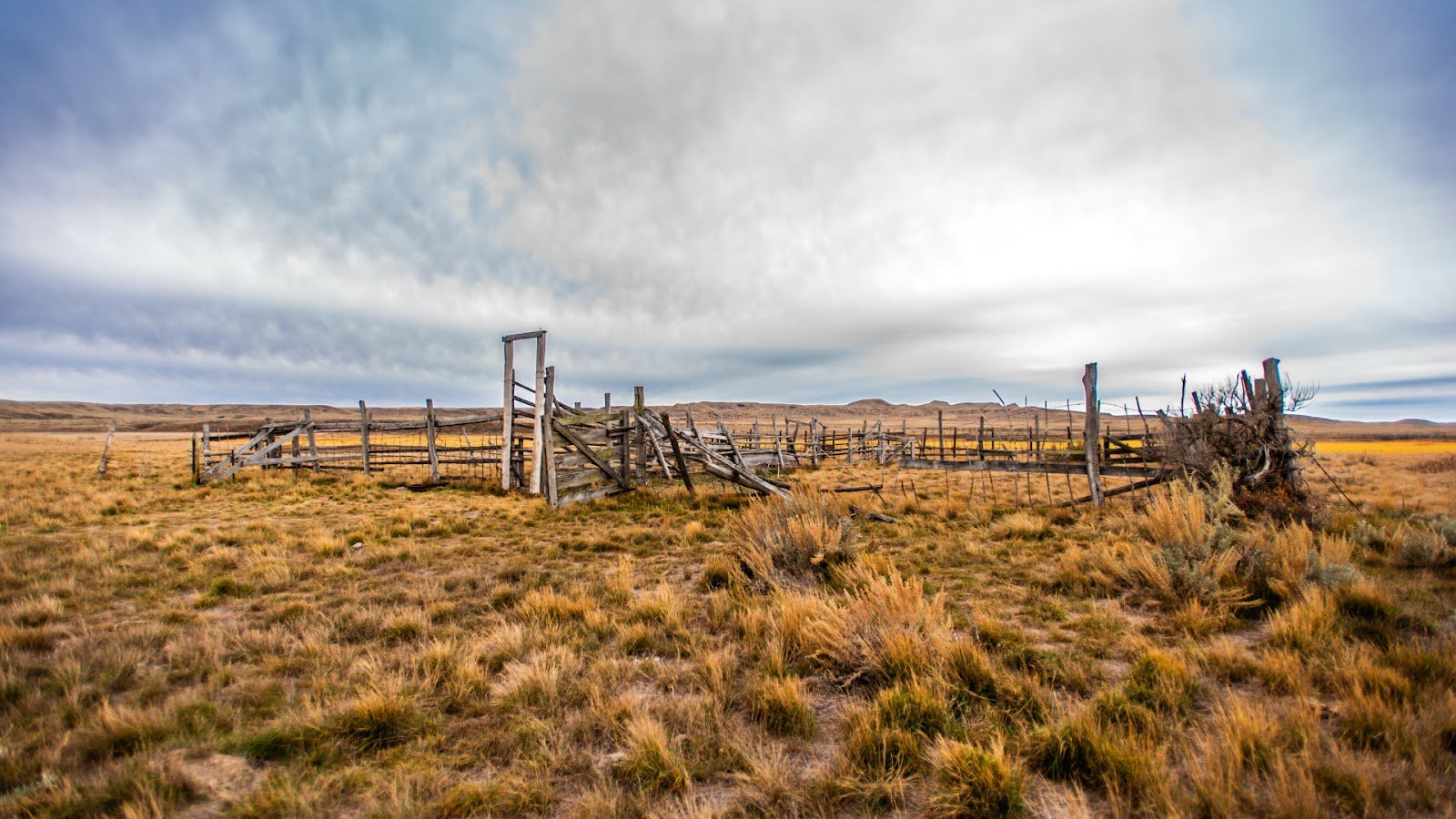
Prairie safari drives show off views that once spread across central North America. Rolling grass reaches horizons that just don’t quit.
Bison herds wander free here, like they always have. These huge animals actually stir up their own weather – dust clouds trail moving herds over the plains. It’s something else.
Grasslands is one of Earth’s darkest places, perfect for stars. Little light pollution means the Milky Way shines bright as a river across the packed night sky.
Fossil hunting finds ancient sea reptiles and early mammals. Experts help you hunt for real discoveries right in the ground.
Horseback riding lets you see the prairie like early explorers did. You’ll cover more ground and connect with the land in a real way.
Kluane National Park (Yukon Territory)
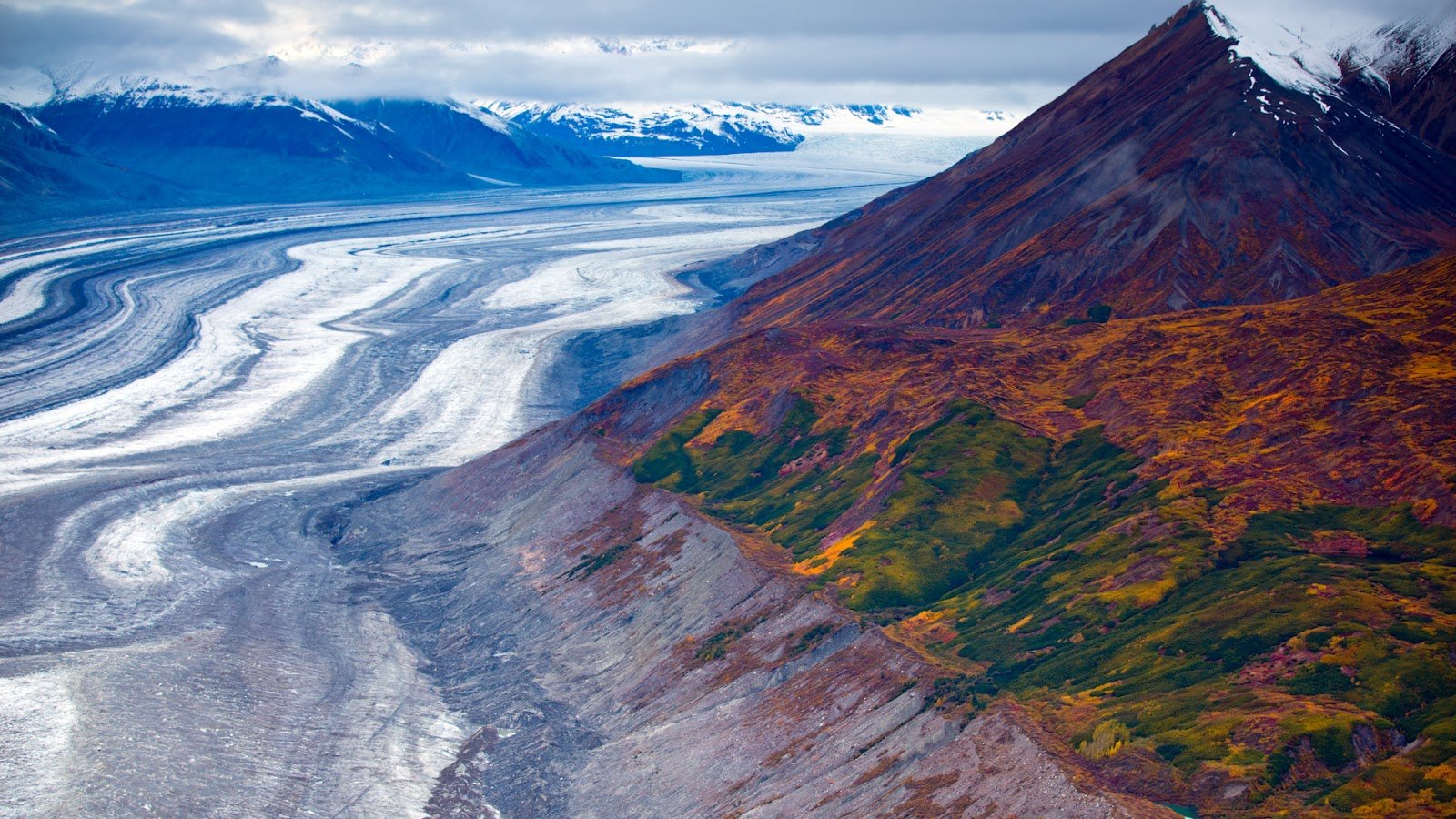
Mount Logan hits 5,959 meters. That’s Canada’s highest. This giant peak also holds onto Earth’s biggest icefield outside polar regions.
Want views you just can’t get to? Try a flightseeing tour. You’ll see glaciers, alpine lakes, and mountains stretching way beyond the horizon.
Rafting Alsek River is a pretty wild ride with great sights. This water starts in glaciers, runs all the way to the Pacific, and passes through different environments as it goes.
Look for animals like Dall sheep, caribou, grizzly bears, and golden eagles. They all find ways to live well in this challenging northern place.
Polar Bear Country: Wapusk and Wood Buffalo
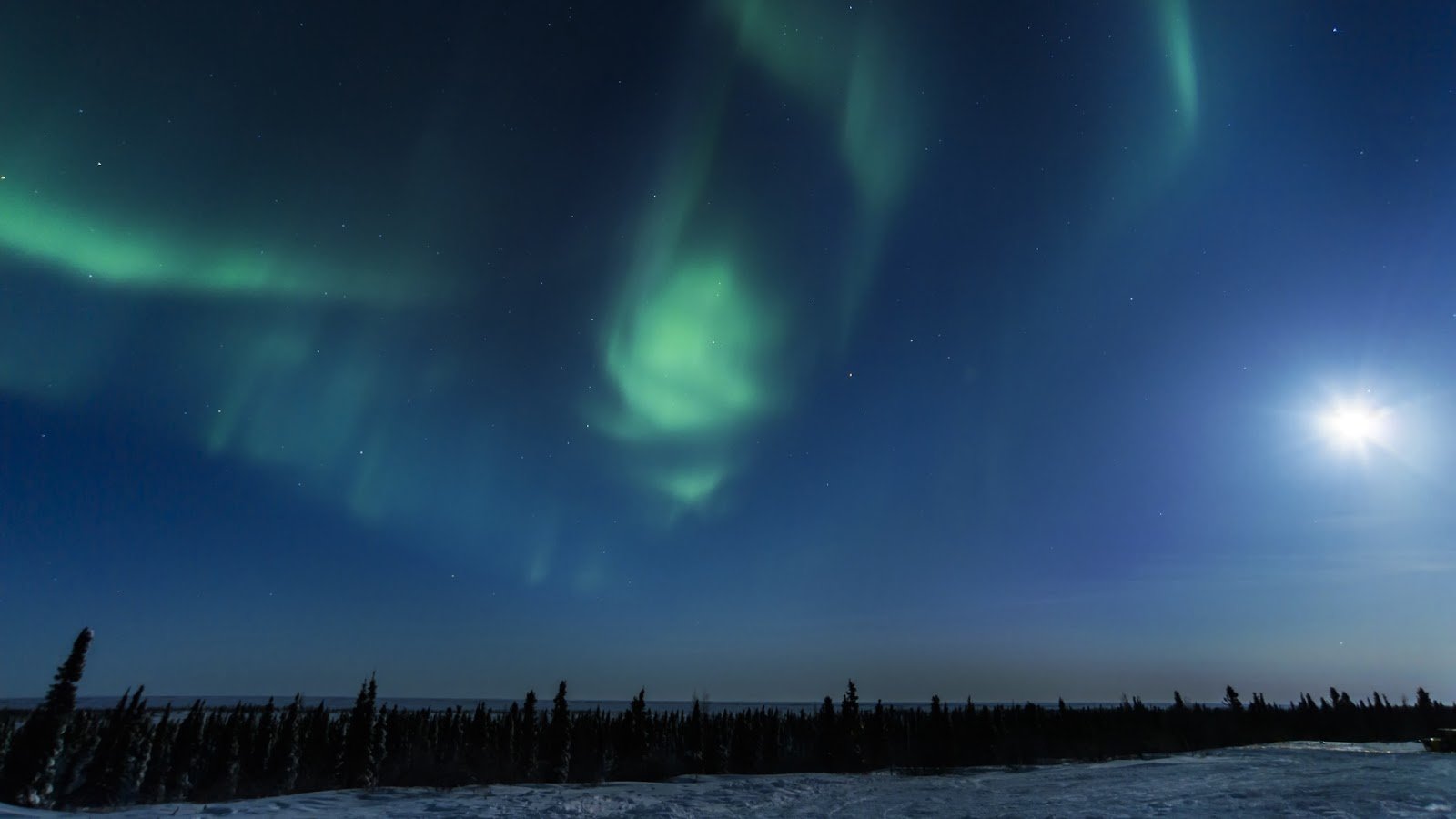
Wapusk National Park in Manitoba protects important polar bear denning areas. Come spring, mother bears leave their dens with brand-new cubs. From nearby Churchill, specialized tours let people safely see them.
Over in Wood Buffalo National Park, straddling the Northwest Territories and Alberta, you’ll find North America’s biggest free-roaming bison herd. This park is also where endangered whooping cranes nest in its remote wetlands. These birds almost disappeared before conservation work saved them – no kidding.
Then there are the salt plains. They form landscapes that seem almost alien, because hardly any plants grow there. Yet, these mineral-rich flats support special ecosystems uniquely adapted to such harsh conditions.
Planning Your Perfect Park Adventure
Best Time to Go:
- Summer (June-August) means all parks are open. Trails are clear, animals are out, and weather’s usually good. But heads up: places like Banff and Jasper fill up fast. Book way ahead.
- Winter changes everything. Hit the slopes in Banff or Jasper, or try frozen waterfall walks in Fundy.
Passes & Bookings:
- Get a Parks Canada Pass for year-round entry to all parks. One fee covers it.
- Pro tip: watch for free entry days! Canada sometimes offers these during big celebrations.
- Popular spots (Lake Louise, West Coast Trail) need reservations. Book months early.
Traveling Right:
- Wildlife safety is serious here. Carry bear spray where needed and store food properly. These animals are wild.
- Follow Leave No Trace: pack out trash, stick to trails, camp only where allowed. Keep parks pristine.
- Supporting Indigenous tourism adds real depth. Many parks offer cultural programs led by Indigenous guides.
Quick Reference: Activities and Regions
Top Parks by Activity:
- Hiking: Jasper has a massive trail network. Gros Morne offers tough mountain climbs. Cape Breton features gorgeous coastal walks.
- Wildlife Viewing: Spot elk and bears in Jasper. See polar bears at Wapusk. Find big bison herds roaming Grasslands.
- Water Adventures: Pacific Rim is great for surfing and kayaking. Fundy delivers unique tidal experiences. Canoeing is perfect around the Thousand Islands.
- Winter Sports: Banff boasts world-class skiing. Jasper is the spot for ice climbing. Many parks maintain snowshoeing trails.
Regional Must-Visits:
- Rocky Mountains: Banff and Jasper give you stunning mountain views and endless activities.
- Atlantic Canada: Gros Morne stands out with its unique, dramatic geology.
- Pacific Coast: Pacific Rim mixes ocean fun with rich cultural experiences.
- Arctic Regions: Auyuittuq challenges you with raw, ultimate wilderness.
Embrace Canada’s Wild Heart
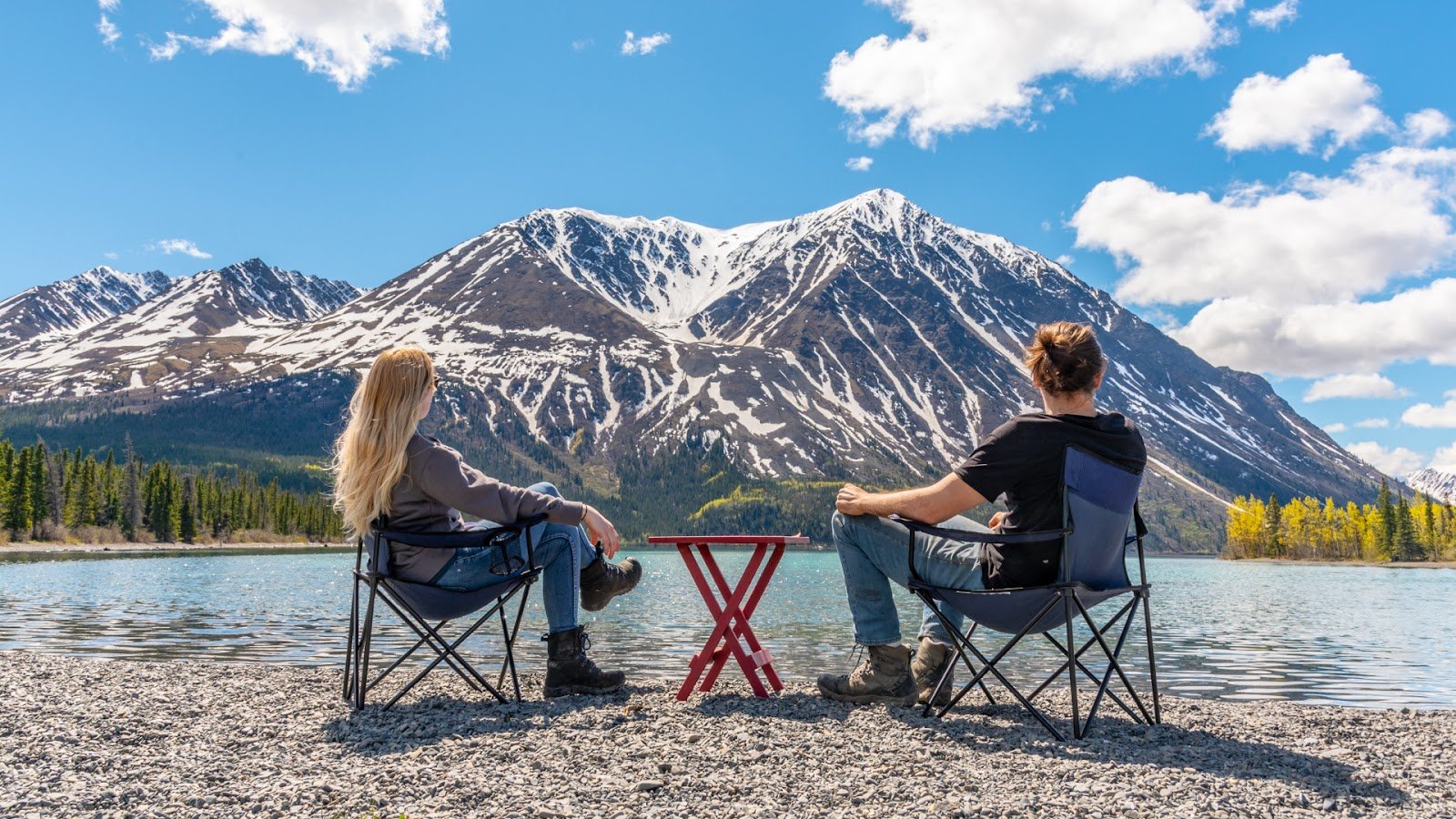
Canada’s national parks mix jaw-dropping scenery with deep cultural roots. Find waterfalls in Yoho or witness huge tides at Fundy – every park delivers something powerful.
Kick things off at a famous spot like Banff or Pacific Rim to get comfortable. Then, head further out. Places like Kluane or Auyuittuq offer real solitude. That kind of quiet can shift how you see things.
These parks show Canada’s wild heart: beautiful, surprising, untamed. Landscapes here have amazed people for ages. Your adventure is waiting. Pack curiosity and expect memories that stick with you long after you leave.
The Canadian wild calls. Time to respond.
FAQ
What Photography Tips Help With Park Landscapes And Wildlife?
Pack a polarizing filter. It makes the skies and water look more vibrant. Also bring a telephoto lens. This lets you photograph wildlife safely from far away. Plan ahead: find out when golden hour happens and scout spots like Moraine Lake or Cabot Trail for those classic shots.
What About Drone Rules For Parks?
Most national parks have pretty strict rules on drones. It’s mainly to protect wildlife and keep visits enjoyable for everyone. You’ll usually need a special permit to fly one, and those aren’t handed out casually – only for specific reasons. Bottom line: always look up that park’s actual rules before you pack your drone.
Is Backcountry Camping Permitted, And How Do I Get Permits?
Backcountry camping’s a big draw in parks like WCT and Akshayuk Pass. Just remember: you need permits. They go fast! Book way ahead through Parks Canada Reservation Service.
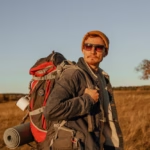
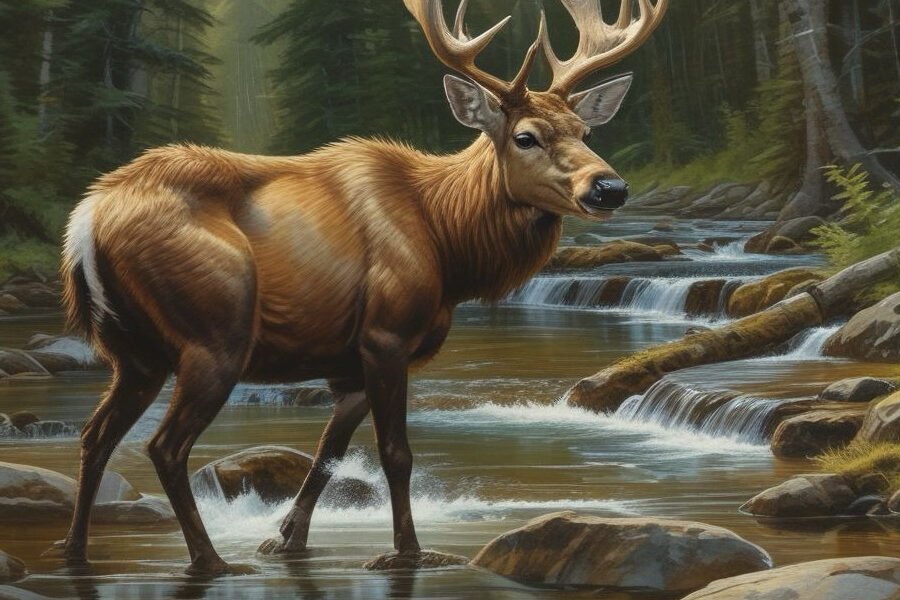
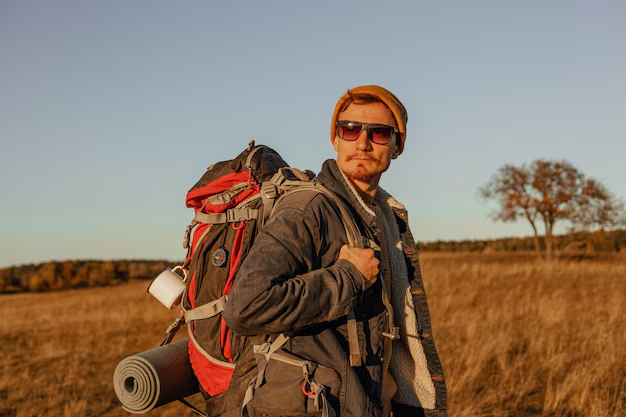



0 Comments